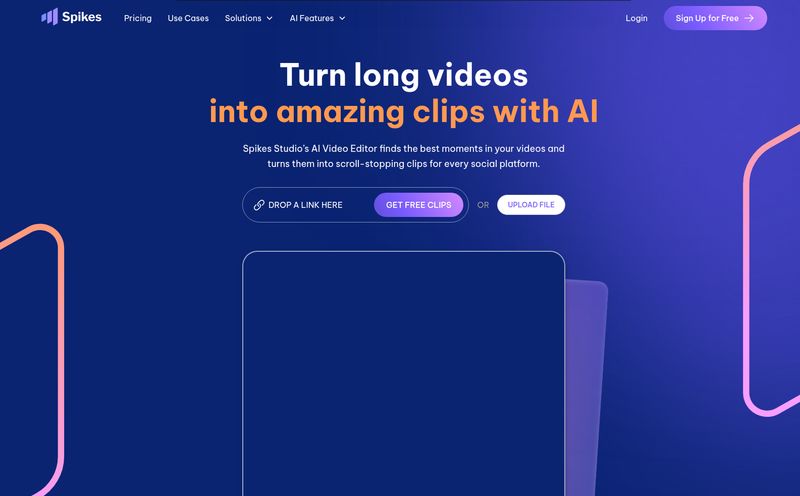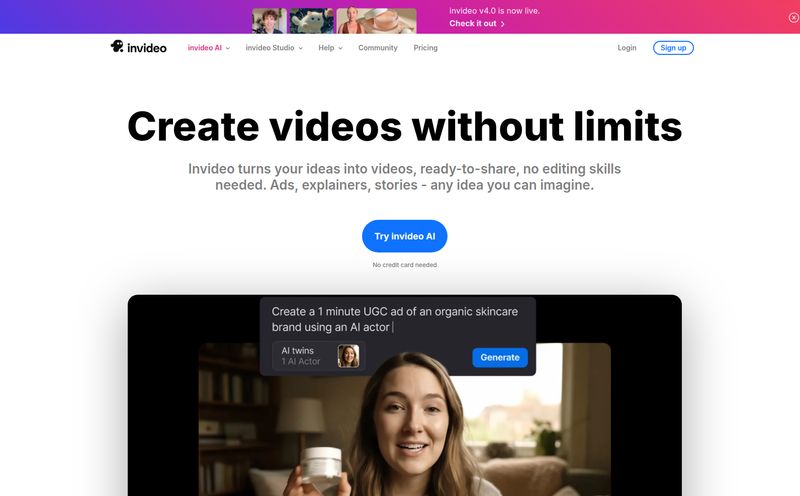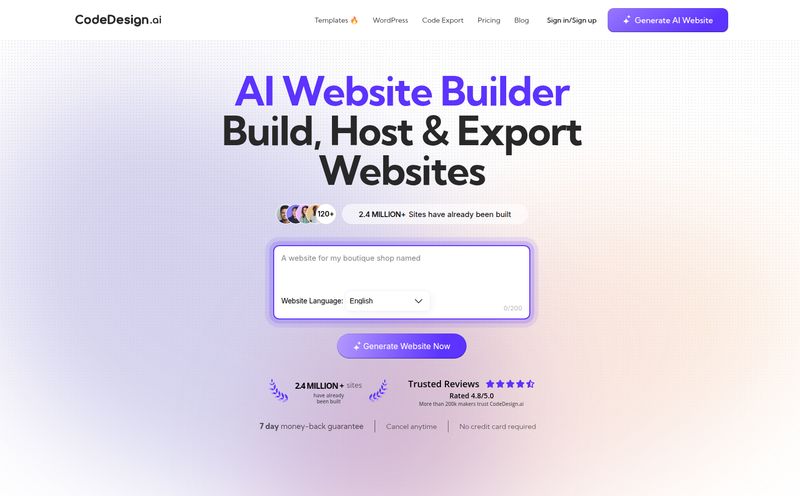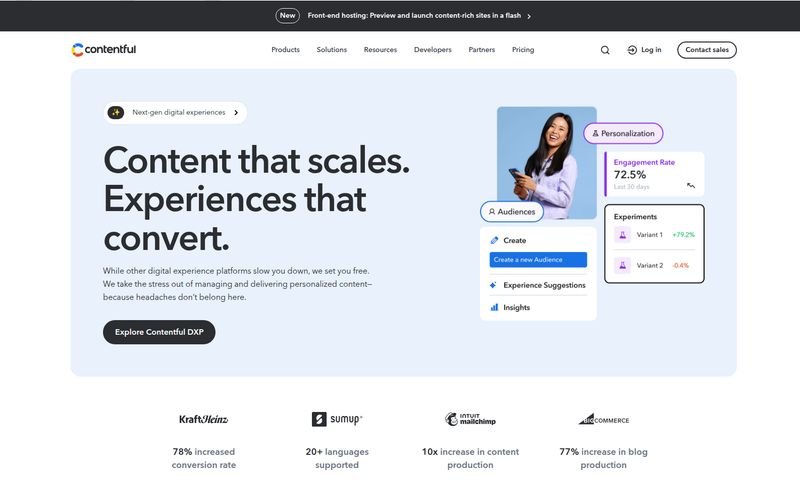You and me. As someone who’s been in the SEO and traffic trenches for years, I've seen more 'game-changing' tools than I've had hot dinners. Most of them are just flashes in the pan. But every now and then, something comes along that genuinely makes me lean in a little closer to my screen. Recently, that something was a tool called Capify.
The premise was simple, yet brilliant. We all know the struggle. You spend hours, maybe even days, shooting and editing the perfect video for TikTok, Instagram Reels, or YouTube Shorts. You pour your heart and soul into it. You upload it, and... crickets. It gets lost in the endless, deafening scroll. Trying to stop a user mid-scroll these days is like trying to flag down a bullet train with a handkerchief. It’s brutal.
Capify claimed to have the answer: AI-generated text-hooks and overlays designed to grab attention instantly. I was intrigued, so I started digging. And that, my friends, is when things got weird.
So, What Was Capify Supposed to Be?
From what I gathered, Capify wasn't just another captioning tool. Its whole reason for being was to use artificial intelligence to analyze your video and then create trendy, attention-grabbing text overlays. Think of those viral videos with the bold, punchy text that pops up right at the beginning—the kind that makes you stop and say, “Okay, I need to see where this is going.” That was Capify’s playground.
The goal was to directly attack those core metrics we all obsess over: views, engagement, and most importantly, watch time. By creating compelling hooks, the tool aimed to keep people watching longer, which, as we know, is pure gold to the algorithms that rule our lives. It promised to combine what’s hot right now with the actual content of your video, making sure your message didn't just get seen, but felt.
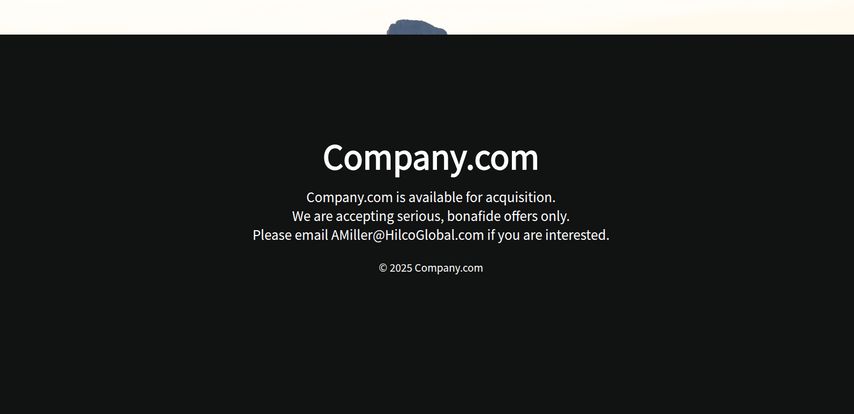
Visit Capify
The Core Features That Caught My Eye
Digging through the feature list, a few things stood out to me as a professional marketer. It wasn't just a list of buzzwords; these were solutions to actual problems we face daily.
AI-Powered Text Generation
This was the main event. The idea of an AI watching my video and suggesting hooks like "You won't believe what happens next" or "The biggest mistake people make when..." is compelling. I've spent more time than I'd like to admit A/B testing video hooks, and it's a grind. An AI assistant that can do the heavy lifting? Yes, please. It’s not about replacing creativity, but about augmenting it. Giving you a starting point when you’re staring at a blank screen.
Customization for Your Brand
Thankfully, it wasn't a one-size-fits-all solution. Capify apparently offered customization options—different fonts, colors, and styles. This is non-negotiable. Your content needs to look like your content. Having consistent branding, even in your text overlays, builds recognition and trust with your audience. The last thing you want is for your polished video to have a cheap-looking, generic text slapped on it.
Trend-Aware Video Hooks
This is what separated it from a basic video editor. Social media trends move at the speed of light. What was a viral text style last week is cringe this week. Capify’s claim to be ‘trend-aware’ was its secret sauce. An AI that keeps up with what's currently working on TikTok or Reels could give creators a serious edge, helping their content feel native to the platform instead of like an out-of-place ad.
The Potential Upsides and Obvious Downsides
Every tool has its angels and its demons. On one hand, the advantages are pretty clear. You could seriously boost your views and engagement by using proven, trendy hook formulas. It simplifies what can be a tedious part of the creation process, saving you time and creative energy. Plus, it helps your content pop in a saturated feed. For a busy creator or a small marketing team, this could be a massive win.
However, I always get a little twitchy when we talk about handing over creative decisions to an AI. Some might argue, and I'd be one of them, that relying too heavily on an AI for hooks could homogenize content. If everyone is using the same AI-powered trend machine, does everything start to look the same? There’s a fine line between a helpful tool and a creative crutch. And of course, the effectiveness of any AI-generated hook still depends heavily on the quality of the video content itself. A great hook can't save a boring video.
The Big Mystery: Pricing and Where It Went
Okay, so here's the twist in the story. I was ready to check it out, maybe even sign up for a trial. I looked for the pricing page. The information I found suggested a couple of tiers:
| Plan | Price | Features |
|---|---|---|
| Capify PRO | $11 /month | 200 Text-Overlay generations, 6 customization options, 8 font styles, unlimited downloads, 24/7 customer care. |
| Capify Business | Contact for Price | Everything from PRO, plus unlimited captions, more customization, and a dedicated care manager. |
The pricing seemed incredibly reasonable, almost too good to be true for what it promised. An $11/month entry point is a no-brainer for most creators. I went to the URL I had... and was met with a 404 error. A dead end. I tried the root domain, `Company.com`, and found a stark landing page: "Company.com is available for acquisition."
Poof. Gone.
So, what happened to Capify? Was it acquired by a larger company and absorbed? Did it simply fail to gain traction and shut down? This is the volatile reality of the SaaS world, especialy in the hyper-competitive AI space. A promising tool can be here one day and a 'for sale' sign the next. It’s a shame, because the concept is rock solid.
Should You Use a Tool Like This Anyway?
Even though Capify seems to have become a ghost, the idea behind it is more relevant than ever. The question remains: is a dedicated AI hook-writer worth it? My take is: absolutely, for the right person.
If you're a high-volume creator, a social media manager juggling multiple accounts, or just someone who struggles with the 'big idea' part of content creation, a tool like Capify is a superpower. It's not about letting the AI do all the work. It’s about collaboration. Let the AI generate ten ideas, and you pick the best one and refine it. Let it handle the tedious animation so you can focus on strategy and storytelling.
For those looking for alternatives, tools like Descript and the Captions app offer similar functionalities, though Capify's specific focus on trendy hooks was its unique selling point. The principle is the same: use technology to be faster, smarter, and more effective.
Burning Questions You Might Have
What exactly is a 'text-hook' in a video?
A text-hook is a short piece of text, usually displayed within the first 1-3 seconds of a video, designed to create curiosity and stop the viewer from scrolling away. Examples include questions ("Have you ever wondered...?") or provocative statements ("You're cleaning your kitchen all wrong.").
Can AI really be creative enough for video marketing?
I get this question a lot. AI isn't 'creative' in the human sense. It doesn't have experiences or emotions. Instead, it's incredibly good at pattern recognition. It can analyze millions of successful videos and identify the patterns in the hooks, captions, and styles that lead to high engagement. It then applies those patterns to your content. So it's more data-driven replication than pure creativity, but its incredibly effective.
Are there good alternatives to Capify now that it's gone?
Yes. While Capify had a unique angle, many modern video editing tools are integrating AI features. Descript is fantastic for its text-based video editing and AI effects. The Captions app is hugely popular for its automatic, stylish captioning that mimics popular social media trends. Even tools like Veed.io are getting in on the AI game.
Is it cheating to use an AI for content ideas?
Not at all. Is it cheating for a writer to use a thesaurus? Or for a graphic designer to use a stock photo? Tools are tools. The final product, the strategy, and the voice are still yours. Using AI to speed up your workflow and brainstorm ideas is just smart business.
How important are text overlays for the algorithm?
Very. Algorithms on platforms like TikTok and Instagram prioritize watch time and engagement. A good text overlay and hook directly increases watch time. Furthermore, many people watch videos with the sound off, so text makes your content accessible and understandable, preventing them from scrolling past immediately.
My Final Thoughts on the Ghost of Capify
The story of Capify is a fascinating, if short, one. It serves as a great reminder of how quickly things move in this industry. An incredible idea, a solid feature set, and even what seemed like fair pricing isn't always enough to survive. Maybe it’ll re-emerge one day under a new name, or maybe its creators were acqui-hired by a tech giant.
Regardless, the need for a tool like Capify is undeniable. As content creators and marketers, we're in a perpetual arms race for attention. Using AI to help us craft that perfect, scroll-stopping first impression isn't just a novelty; it's the future of efficient and effective social media marketing. While we may never get to use Capify, its ghost reminds us to keep an eye out for the next tool that promises to give us an edge in those crucial first three seconds.
Reference and Sources
- Capify Official Website (Note: Domain appears to be defunct and for sale as of the time of writing).
- Descript - A popular AI-powered video and audio editor.
- Captions App - An AI tool focused on creating engaging video captions.
